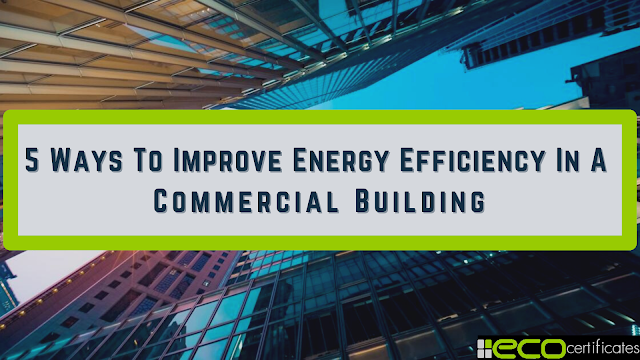5 Ways To Improve Energy-Efficiency In A Commercial Building
Commercial buildings have the highest energy requirements in the market. But they also contribute to substantial wastage.
In fact, it is noted that commercial developments waste 30% of their energy. That leads to colossal costs, reduced efficiency, and minimal to no ROI in the long run.
Thankfully, you can implement several practical strategies to reduce energy costs and make your building energy-efficient.
Let's explore five proven ways to help you get a great head start today.
By minimizing your energy-related emissions, your construction project can abide by new green infrastructure regulations such as the NABERS rating. You can also improve your consumer appeal, getting an edge over your competitors.
How To Improve Energy Efficiency In A Commercial Building
1. Understand the causes of major energy loss in commercial building
For residential buildings, the NatHERS assessment is applicable.
The most common types of energy loss include:
Heat loss through ventilation systems
Air leakage through doors and windows
Heat loss through floors, walls and ceilings
Heating and cooling loss due to poor insulation
Also Read: Large Boarding Houses And Sustainability Standards
2. Perform regular audits
There are many different kinds of audits that you can conduct, but here's one we recommend for your business:
Audit the building's heating, ventilation and air conditioning (HVAC) system. This should include all parts of the HVAC system—from the air handler to the return air ductwork. You'll want to make sure that no leaks or other problems are present.
Audit lighting fixtures in your building. Look at all types of light fixtures, including track lights and overhead lights, as well as wall-mounted luminaires and task lights. You'll want to make sure there aren't any issues with these systems, such as broken bulbs or dimmer switches that won't turn off properly when they're not needed anymore (for example, if they're used during night hours).
3. Consider weatherising doors and windows.
The first step in weatherising a door or window is to seal it in order to prevent air infiltration, which can cause drafts inside the building.
The second step is to insulate the frame itself, which helps keep heat inside during cold weather and warm up during hot weather.
The third step is to seal the frame with caulk or foam rubber strips around each window and door frame gap.
The fourth step involves adding insulation between the doors and windows themselves by applying heavy-duty rubberised weather stripping around each gap.
Weatherising doors and windows are also an important aspect of a residential project's energy efficiency. It's critical during the NatHERS assessment.
4. Increase natural lighting exposure
One of the best ways to improve natural light in your home is by installing skylights—or awnings over windows. These can help provide indirect lighting without increasing your energy bill.
- Another way to increase natural light is by using high-quality solar windows. The transparent cells allow the sunlight to illuminate the interiors while providing a sustainable way to generate energy and become self-sustainable.
5. Installing smart thermostats
Installing smart thermostats in your commercial building can be incredibly beneficial for
maintaining your NABERS rating.
Smart thermostats save money!
Not only can they save money by reducing the building's operational energy costs, but they can also help reduce the cost of heating and cooling your building by 20% or more. They work with the existing HVAC system, so there's no need to purchase a new unit.
Smart thermostats make it easier to run your business.
When you're running a business and trying to keep up with customers' needs, it's easy to forget about things like heat, ventilation, and air quality.
With smart thermostats installed in your building, it's much easier for managers or employees to adjust temperature settings quickly when needed.
Wrapping Up
Follow these quick and practical tips to improve the performance of your commercial project. You can also opt for professional assistance to improve your energy ratings in an easy and efficient way!




Comments
Post a Comment